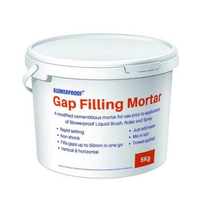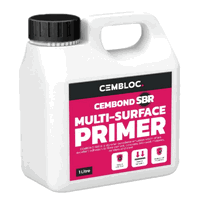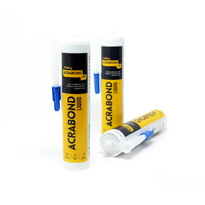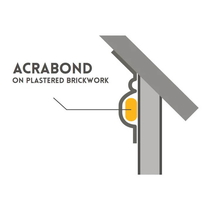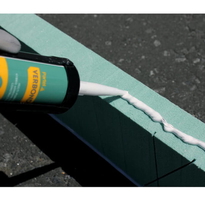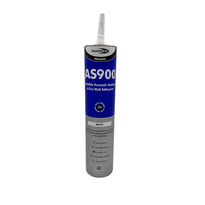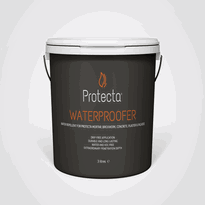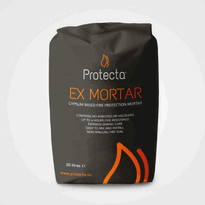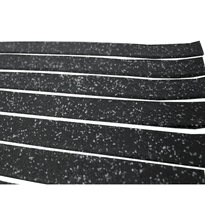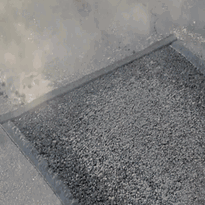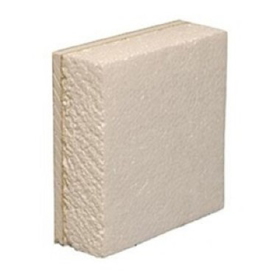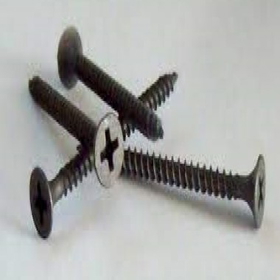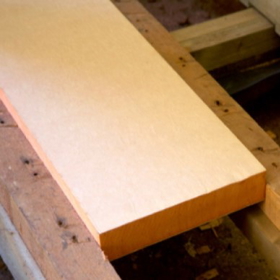Similar Categories
Sealants & Adhesives: A Guide to Choosing and Using the Right Products for Your Project
If you are looking for sealants and adhesives for your building or renovation project, you might be overwhelmed by the variety of products available on the market.
How do you know which one is the best for your specific needs? What are the differences between sealants and adhesives, and how do they work?
In this article, we will answer these questions and provide you with some tips and recommendations on how to choose and use sealants and adhesives effectively.
What are sealants and adhesives?
Sealants and adhesives are substances that can bond or seal two or more surfaces together. They have different properties and purposes, depending on their composition, application, and performance.
Adhesives are substances that can hold two surfaces together in a strong and permanent manner. They have high strength and low elongation, which means they can resist stress and deformation. Adhesives are used to create durable and rigid bonds between various materials, such as wood, metal, plastic, glass, ceramic, etc. Adhesives can be classified into three main types: physically hardened, chemically cured, and pressure sensitive.
- Physically hardened adhesives are adhesives that harden after application, either by evaporation of solvents, absorption of water, or cooling of hot melts. They can have a wide range of properties and uses, depending on their chemistry. Examples of physically hardened adhesives are organic solvent-based, water-based, and hot melt adhesives.
- Chemically cured adhesives are adhesives that harden by a chemical reaction, either between two components or with the environment. They are generally very strong and resistant to temperature, humidity, and many chemicals. Examples of chemically cured adhesives are cyanoacrylates, silicones, methyl methacrylates, and urethanes.
- Pressure-sensitive adhesives are adhesives that remain viscous and do not completely solidify. They bond to surfaces by applying pressure and can be peeled off without leaving residues. They are sensitive to temperature and load, which can affect the quality of the bond. Examples of pressure-sensitive adhesives are acrylics, rubber, and silicone.
Sealants are substances that can attach to two surfaces, filling the space between them to provide a barrier or protective coating. They have low strength and high elongation, which means they can accommodate movement and deformation. Sealants are used to fill gaps and prevent leakage of fluids, gases, dust, etc. They can also enhance the appearance and durability of the surfaces. Sealants can be classified into three main types: one-component, two-component, and tapes.
- One-component sealants are sealants that are ready to use and cure by exposure to moisture, heat, or air. They are easy to apply and have good adhesion to many substrates. Examples of one-component sealants are silicone, urethane, solvent-based acrylics, solvent-based butyls, water-based latex, silyl-modified polymer (SMP), and polysulfides.
- Two-component sealants are sealants that consist of two parts that need to be mixed before application. They are cured by a chemical reaction between the components and have higher strength and faster curing time than one-component sealants. Examples of two-component sealants are epoxy, polyurea, and polyurethane.
- Tapes are sealants that are pre-formed into strips or rolls and have a pressure-sensitive adhesive on one or both sides. They are easy to apply and remove and have good flexibility and conformability. Examples of tapes are foam, butyl, and acrylic.
How to choose the right sealants and adhesives for your project?
 There is no single answer to this question, as different sealants and adhesives have different advantages and disadvantages, depending on the type, size, and condition of the surfaces to be bonded or sealed, the environmental factors, the desired performance, and the budget. However, here are some general guidelines to help you make an informed decision:
There is no single answer to this question, as different sealants and adhesives have different advantages and disadvantages, depending on the type, size, and condition of the surfaces to be bonded or sealed, the environmental factors, the desired performance, and the budget. However, here are some general guidelines to help you make an informed decision:
- Consider the type of materials to be bonded or sealed. Different materials have different properties, such as porosity, hardness, smoothness, thermal expansion, etc., that affect the compatibility and adhesion of sealants and adhesives. For example, porous materials, such as wood, concrete, and brick, require sealants and adhesives that can penetrate and fill the pores, while non-porous materials, such as metal, glass, and plastic, require sealants and adhesives that can form a strong bond on the surface. Similarly, hard materials, such as steel, ceramic, and stone, require sealants and adhesives that can withstand high stress and impact, while soft materials, such as rubber, foam, and leather, require sealants and adhesives that can accommodate high elongation and flexibility.
- Consider the size and shape of the gap or joint to be filled or sealed. The size and shape of the gap or joint determine the amount and type of sealant or adhesive needed, as well as the method of application. For example, narrow and deep gaps or joints require sealants or adhesives that can flow and cure easily, while wide and shallow gaps or joints require sealants or adhesives that can bridge and fill the space. Similarly, regular and straight gaps or joints can be easily sealed or bonded with tapes or cartridges, while irregular and curved gaps or joints may require sealants or adhesives that can be applied with a brush, spatula, or gun.
- Consider the environmental factors that affect the sealants and adhesives. Environmental factors, such as temperature, humidity, sunlight, rain, wind, etc., can affect the curing, performance, and durability of sealants and adhesives. For example, high temperature and humidity can accelerate the curing and degrade the quality of some sealants and adhesives, while low temperature and humidity can delay the curing and reduce the adhesion of some sealants and adhesives. Similarly, sunlight, rain, and wind can cause discolouration, cracking, and peeling of some sealants and adhesives, while others can resist these effects. Therefore, it is important to choose sealants and adhesives that are suitable for the expected environmental conditions of the project.
- Consider the desired performance and durability of the sealants and adhesives. The performance and durability of sealants and adhesives depend on their properties, such as strength, elasticity, hardness, viscosity, etc., as well as the stress and load they are subjected to. For example, high-strength and low-elasticity sealants and adhesives are ideal for bonding rigid and stable surfaces, while low-strength and high-elasticity sealants and adhesives are ideal for sealing flexible and dynamic surfaces. Similarly, high-hardness and low-viscosity sealants and adhesives are ideal for filling and smoothing rough and uneven surfaces, while low-hardness and high-viscosity sealants and adhesives are ideal for creating and shaping soft and smooth surfaces. Therefore, it is important to choose sealants and adhesives that match the desired performance and durability of the project.
- Consider the budget and availability of the sealants and adhesives. The cost and availability of sealants and adhesives vary depending on their quality, quantity, and brand. For example, high-quality and high-quantity sealants and adhesives are usually more expensive and less available than low-quality and low-quantity sealants and adhesives. Similarly, well-known and reputable brands of sealants and adhesives are usually more expensive and less available than unknown and generic brands of sealants and adhesives. Therefore, it is important to choose sealants and adhesives that fit the budget and availability of the project.
How to use sealants and adhesives correctly and safely?
Using sealants and adhesives correctly and safely can ensure the best results and prevent any accidents or damages. Here are some tips and precautions to follow when using sealants and adhesives:
- Read and follow the instructions and warnings on the product labels and datasheets. Different sealants and adhesives have different specifications, recommendations, and limitations, such as shelf life, storage conditions, mixing ratios, curing times, application methods, etc., that need to be followed to ensure optimal performance and safety. For example, some sealants and adhesives need to be stored in a cool and dry place, while others need to be stored in a warm and moist place. Some sealants and adhesives need to be mixed in precise proportions, while others need to be mixed in approximate amounts. Some sealants and adhesives need to be applied within a certain time frame, while others need to be applied at a certain temperature. Therefore, it is important to read and follow the instructions and warnings on the product labels and datasheets before using sealants and adhesives.
- Prepare the surfaces and tools before applying sealants and adhesives. The surfaces and tools need to be clean, dry, and free of any dust, grease, oil, paint, rust, or other contaminants that can affect the adhesion and curing of sealants and adhesives. For example, the surfaces can be cleaned with a cloth, brush, or solvent, depending on the type of material and contamination. The tools can be cleaned with water, alcohol, or acetone, depending on the type of sealant or adhesive and tool. Some surfaces and tools may also need to be primed, sanded, or roughened to improve the adhesion and bonding of sealants and adhesives. For example, some metals and plastics may need to be primed with a special primer, such as Cembloc SBR Primer, while some wood and concrete may need to be sanded or roughened with a tool, such as a wire brush or a grinder. Therefore, it is important to prepare the surfaces and tools before applying sealants and adhesives.
- Apply sealants and adhesives in the right amount and manner. The amount and manner of applying sealants and adhesives depend on the type, size, and shape of the gap or joint, the type and viscosity of the sealant or adhesive, and the method and tool of application. For example, narrow and deep gaps or joints require less sealant or adhesive than wide and shallow gaps or joints and can be filled with a thin nozzle or a syringe. Wide and shallow gaps or joints require more sealant or adhesive than narrow and deep gaps or joints and can be filled with a wide nozzle or a spatula. Similarly, low-viscosity sealants and adhesives can flow and spread easily, while high-viscosity sealants and adhesives can hold and shape better. Therefore, it is important to apply sealants and adhesives in the right amount and manner.
- Allow sealants and adhesives to cure properly and protect them from external factors. The curing time and conditions of sealants and adhesives vary depending on their type, composition, and environmental factors. For example, some sealants and adhesives cure faster and better in high temperature and humidity, while others cure slower and worse in high temperature and humidity. Some sealants and adhesives are cured by exposure to air, while others are cured by exclusion of air. Therefore, it is important to allow sealants and adhesives to cure properly and protect them from external factors, such as heat, cold, moisture, dust, etc., that can affect the curing and performance of sealants and adhesives.
Some examples of sealants and adhesives from Buy Insulation Online
 At Buy Insulation Online, we are a leading online supplier of insulation products, building materials, and tools in the UK. We offer a wide range of sealants and adhesives for various applications and purposes, such as:
At Buy Insulation Online, we are a leading online supplier of insulation products, building materials, and tools in the UK. We offer a wide range of sealants and adhesives for various applications and purposes, such as:
- Blowerproof Gap Filling Mortar: This is a one-component, water-based, and brush-applied sealant that can fill gaps and cracks in walls, floors, and ceilings. It is ideal for air-tightness and thermal insulation, as it can prevent air leakage and heat loss. It can also improve the sound insulation and fire resistance of the surfaces. It is easy to apply and can adhere to most substrates, such as brick, concrete, plaster, wood, metal, etc. It can be painted or plastered over after curing.
- Cembloc SBR Primer: This is a one-component, water-based, and spray-applied primer that can enhance the adhesion and bonding of cementitious products, such as concrete, mortar, screed, etc. It is ideal for priming and sealing porous and non-porous substrates, such as metal, plastic, wood, etc. It can also improve the water resistance, flexibility, and durability of the cementitious products. It is easy to apply and can be diluted with water to adjust the viscosity and coverage.
Conclusion
To sum up, sealants and adhesives are essential products for any building or renovation project, as they can bond or seal various surfaces together, providing a range of benefits, such as thermal insulation, sound insulation, water resistance, fire resistance, etc.
However, choosing and using the right sealants and adhesives can be challenging, as there are many factors to consider, such as the type, size, and condition of the surfaces, the environmental factors, the desired performance and durability, and the budget and availability of the products.
Therefore, it is important to follow some general guidelines and tips, such as reading and following the product instructions and warnings, preparing the surfaces and tools before application, applying the sealants and adhesives in the right amount and manner, and allowing them to cure properly and protect them from external factors. By doing so, you can ensure the best results and prevent any accidents or damages.
If you are looking for high-quality and affordable sealants and adhesives for your project, you can visit us at Buy Insulation Online, we are a leading online supplier of insulation products, building materials, and tools in the UK.
We offer a wide range of sealants and adhesives for various applications and purposes, such as Blowerproof Gap Filling Mortar and Cembloc SBR Primer. You can browse our website Buy Insulation Online and order online, and we will deliver the products to your doorstep. You can also contact us for any queries or assistance, and we will be happy to help you.
